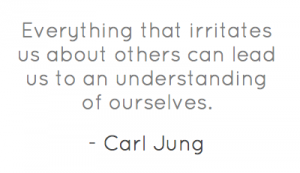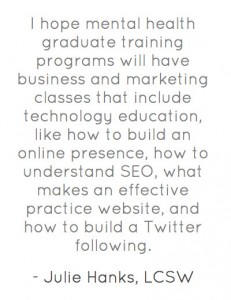5 Keys To Writing Killer Blog Post Titles
Is your great blog content hiding behind boring or predictable titles?
Next time you're browsing the web, notice the articles that catch your eye and pique your interest. What is it about them that interests you enough to click through and look at the content? Often, all that you have to go by is the article title.
Titles matter.
I was just reminded of the importance of blog post titles over the weekend when I posted an article on PsychCentral's World Of Psychology Blog. The article was titled "8 Surefire Ways To Emotionally Screw Up Your Kid." Within 24 hours the post had been shared over 1000 times on Facebook and had been retweeted 100 times on Twitter.
What was it about this post that made it popular and sharable? It all started with the totally unexpected title that piqued people's interest.
5 Key Questions When Titling Posts
1) Does it make you go "huh?"
Is there some kind of twist you can give the title that piques readers interest? For my "8 Surefire Ways" post I wanted to give it a different approach. There are millions of how-to parenting posts on the Internet, so I wanted to do something unexpected while still being helpful.
2) Is your title relevant to the content?
You don't want to g0 with a catchy title that has nothing to do with the content. Your post title should accurately reflect the article content or you risk losing your reader's trust and decreasing your traffic. One of the favorite titles of a recent blog post was 20 Ways Shrinks Stay Sane, where I interviewed therapists around the globe on how they take care of their own emotional health. It was clever and reflected accurately what the post content had in store for readers.
3) Can you say it in fewer words?
If you can title a post with fewer words, then do it. If titles are too long they make it more difficult to share through social media. I titled a recent blog post What The Heck Is Social Collaboration? A less effective title would have been Why Therapists Need To Know About Social Collaboration: What It Is And How To Use It.
4) Does the title include keywords?
Whenever possible, use keywords in the title of your blog post so people searching for your topic can easily find your content. For example, this post is titled 5 Keys To Writing Killer Blog Post Titles. The keywords are blog, post, and titles.
5) Is it in layman's terms?
When writing for the general public, avoid psychobabble, and write titles in language that is understandable to everyone. For example, one of my colleagues wrote a blog post called Mean Girls in Marriage. That title is more approachable than using Relational Aggression In Female Partners After Marriage.
Coming up with great blog post titles is an art that takes practice. It helps me to brainstorm with colleagues or family members to see which titles work best. Do you need feedback on a blog post title that you're working on? Feel free to post it in the comment below and I'll give you my feedback!


 A few years back, after I had my fourth baby and we inherited our two nephews (that’s a long story for another day!), I quit working in the group practice I’d been with for four years. After staying home for two years to put our new family together, I felt it might be time to open a practice of my own. Being a mom of six, I was very nervous about adding a private practice to my already jam-packed “to-do” list. Thank goodness my husband was thinking for me.
A few years back, after I had my fourth baby and we inherited our two nephews (that’s a long story for another day!), I quit working in the group practice I’d been with for four years. After staying home for two years to put our new family together, I felt it might be time to open a practice of my own. Being a mom of six, I was very nervous about adding a private practice to my already jam-packed “to-do” list. Thank goodness my husband was thinking for me.




 I have wholeheartedly embraced social media to build my therapy practice and to educate the public on important emotional health and family relationship topics.
Technology and social media have allowed me to grow my private practice free of managed care during difficult economic times. Facebook is the #2 referral source to my
I have wholeheartedly embraced social media to build my therapy practice and to educate the public on important emotional health and family relationship topics.
Technology and social media have allowed me to grow my private practice free of managed care during difficult economic times. Facebook is the #2 referral source to my
As healers, we genuinely like to do our work. Guiding clients through the therapy process and seeing them make progress is why we do what we do. But if you're in private practice, you know there's a lot going on in the back end and that it's crucial to run an efficient and organized business.